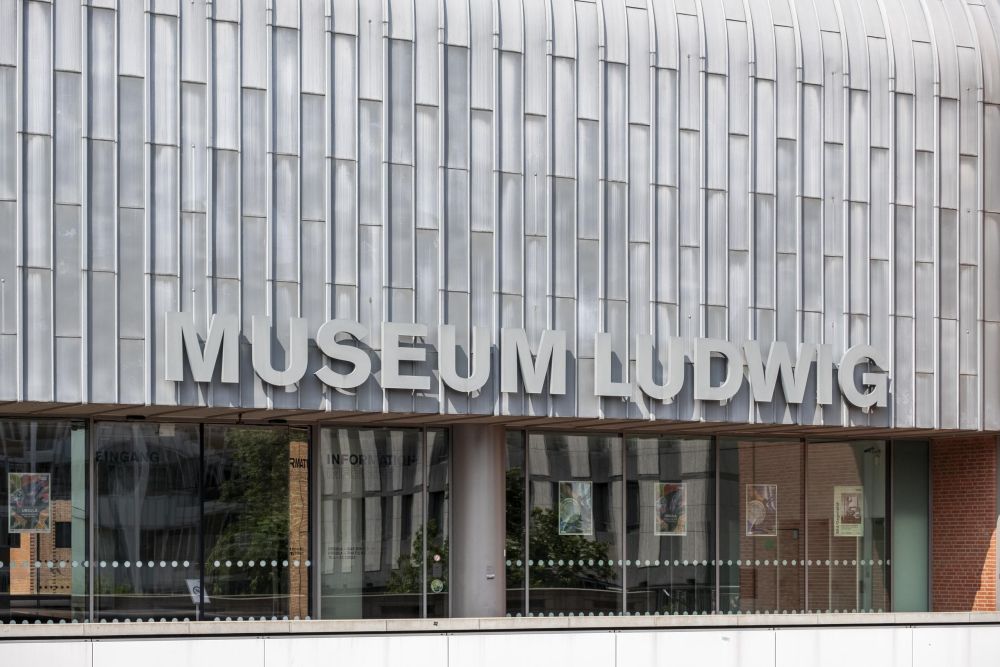

Museum Ludwig, located in the vibrant city of Cologne, is a pinnacle of modern art in Germany and a must-visit destination for art aficionados. The museum, which primarily focuses on twentieth-century and contemporary art, has a fascinating history and is continually evolving to meet the latest trends in art and tourism.
The origins of Museum Ludwig can be traced back to the year 1976, when the museum was founded after the generous donation of 350 modern artworks by the Ludwig family. This donation included an extensive collection of Russian avant-garde, works of American Pop Art, and masterpieces by Picasso, which formed the cornerstone of the museum's collection. From then on, Museum Ludwig became a renowned institution, displaying one of the largest Picasso collections in Europe.
The museum is housed in a striking building designed by architects Peter Busmann and Godfrid Haberer as part of the Rheinhallen, a complex built for the 1913 Werkbund exhibition. Opened to the public in 1986, it stands in stark contrast to the adjacent Cologne Cathedral, creating a visual dialogue between the old and the new, reflective of its collections that span from classic modern art to the contemporary masterpieces.
Over the years, Museum Ludwig's appeal as a tourist destination has only grown. Fascination with modern art coupled with the museum's rotating exhibitions and permanent collections draw in thousands of visitors from around the globe annually. The integration of multimedia guides, interactive exhibitions, and educational programs has significantly enhanced the visitor experience, making art more accessible to a broader audience.
Special exhibitions and retrospectives focusing on both renowned and emerging artists have become a major draw. These exhibitions, often organized in collaboration with other international institutions, have helped to put Museum Ludwig on the global map of must-visit modern art museums.
Recent trends in tourism at Museum Ludwig reflect the growing desire for experiential museum visits. As such, the museum has embraced digital technology, offering virtual tours and augmented reality experiences that allow visitors to engage with art in new and innovative ways. In light of the global Covid-19 pandemic, Museum Ludwig has also adapted by offering online collections and exhibitions, ensuring that art enthusiasts can enjoy their rich collections from the safety of their homes.
Sustainability in tourism is another key trend, and Museum Ludwig is committed to adopting sustainable practices in its operations. Efforts such as reducing energy consumption, promoting local public transport for visitors, and minimizing waste contribute to a more sustainable tourism experience.
Community engagement has become increasingly important, and Museum Ludwig regularly hosts talks, workshops, and events that foster dialogue between artists, curators, and the community. Such initiatives aim to enrich cultural understanding and ensure that the museum remains a vital part of Cologne's social fabric.
Visitor demographics are also evolving, with Museum Ludwig seeing a rise in younger visitors. To appeal to this audience, the museum has enhanced its social media presence and offers dynamic educational programs designed to inspire and cultivate an appreciation for modern art among the younger generations.
In conclusion, Museum Ludwig is an institution that not only boasts an impressive collection of modern and contemporary art but also embodies the spirit of innovation, both in the presentation of its works and its approach to tourism. As travel habits continue to evolve, Museum Ludwig remains at the forefront, offering visitors an enriched experience that reflects the latest trends and advancements in the world of art tourism.